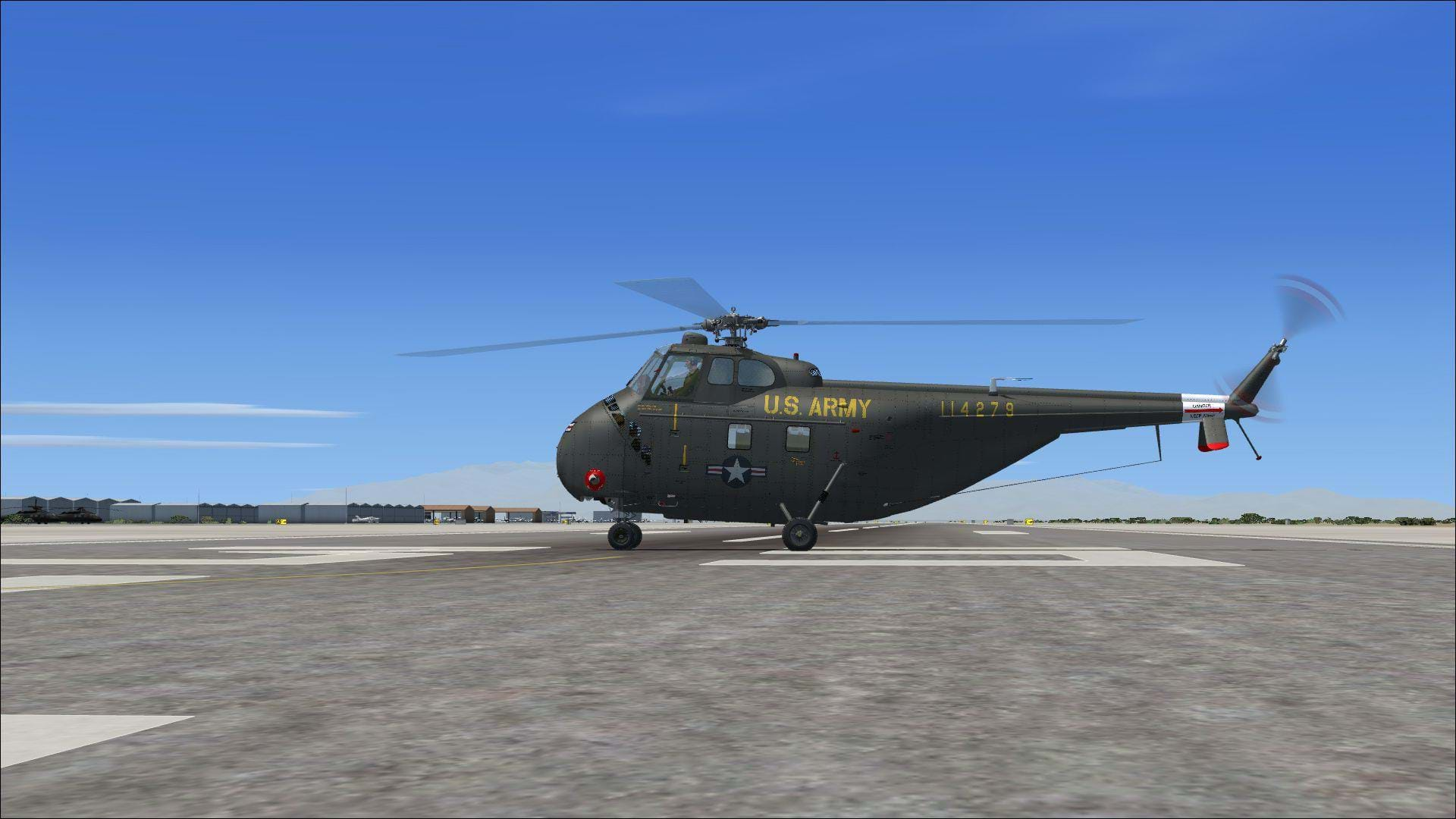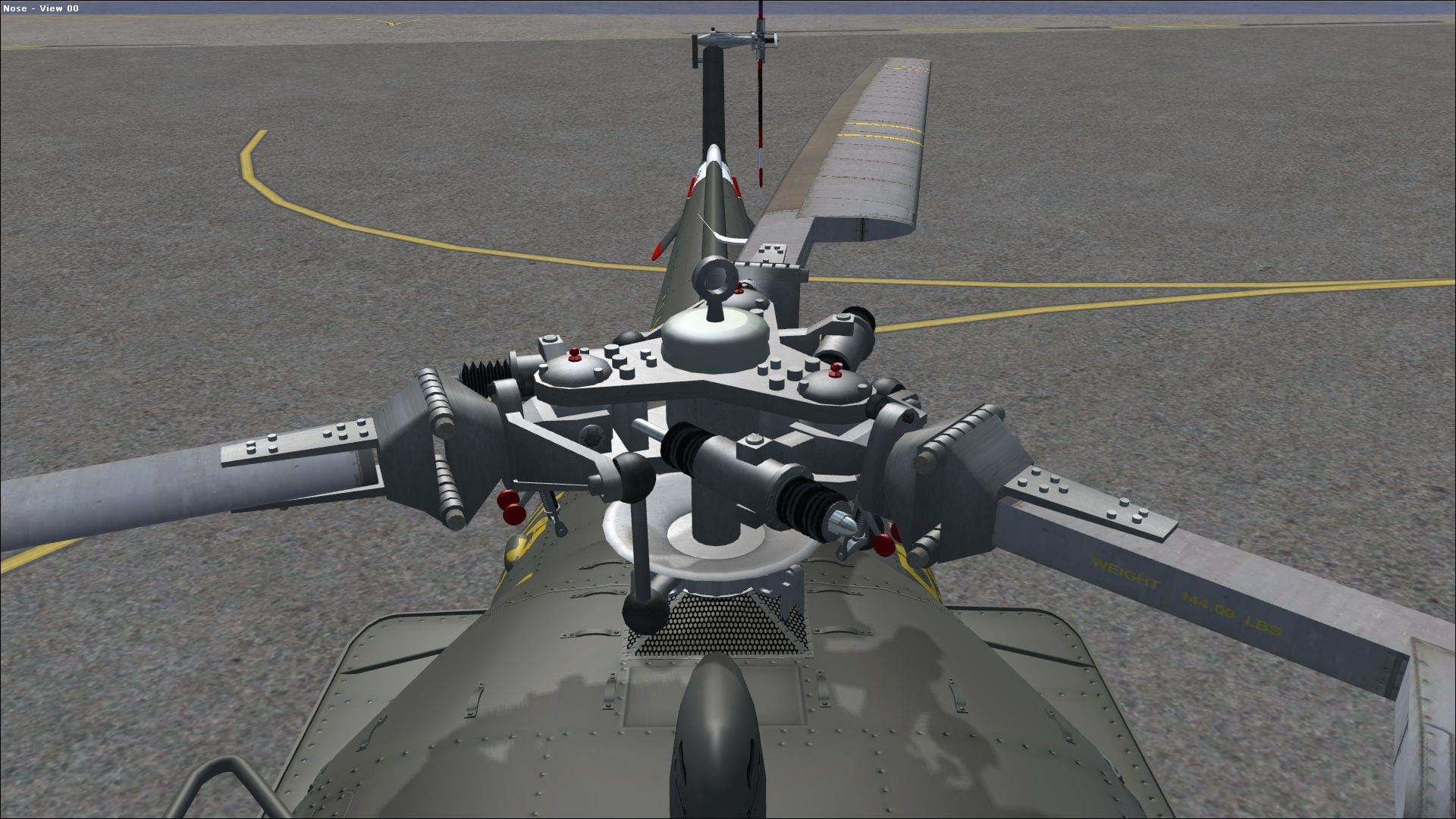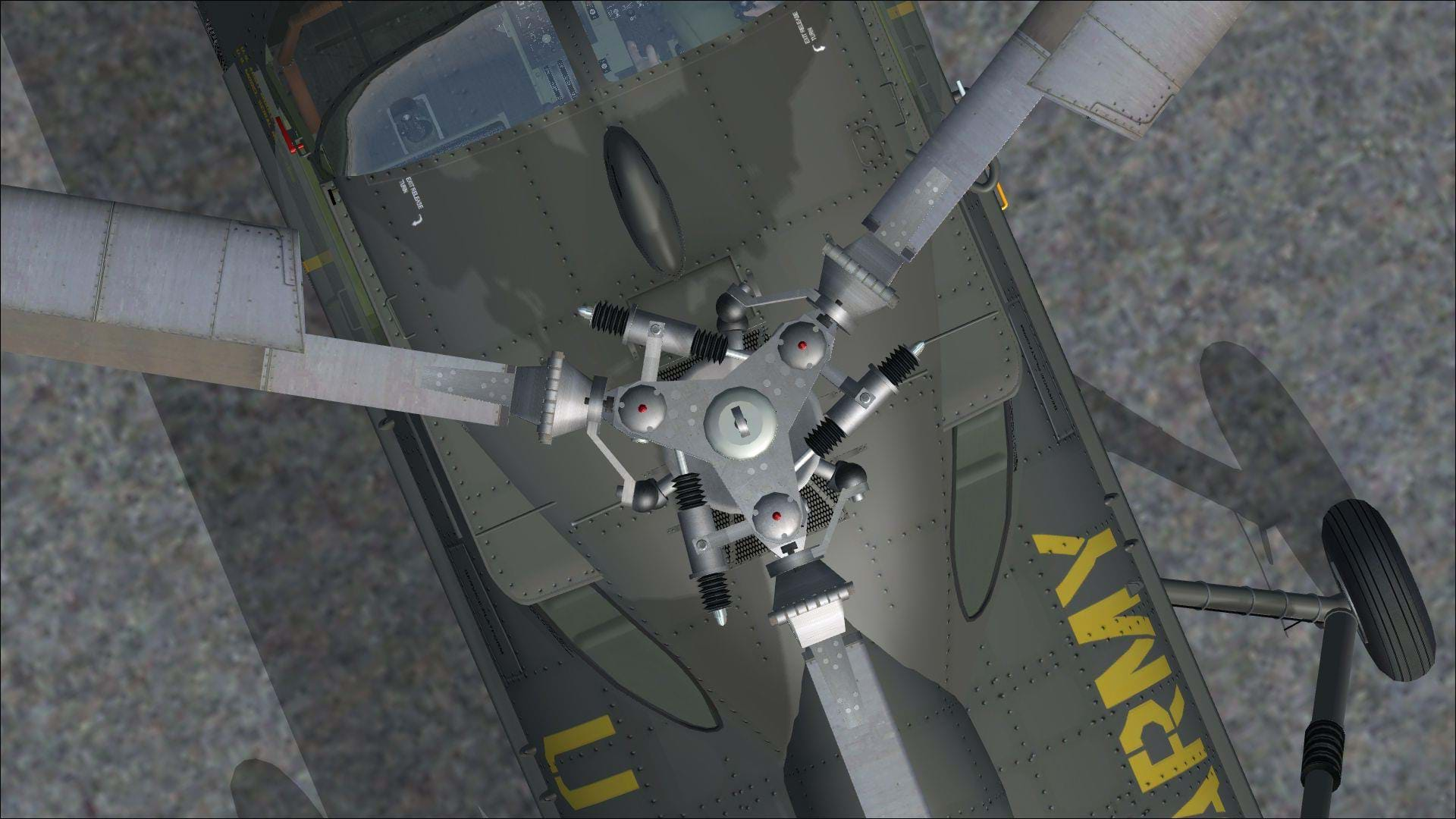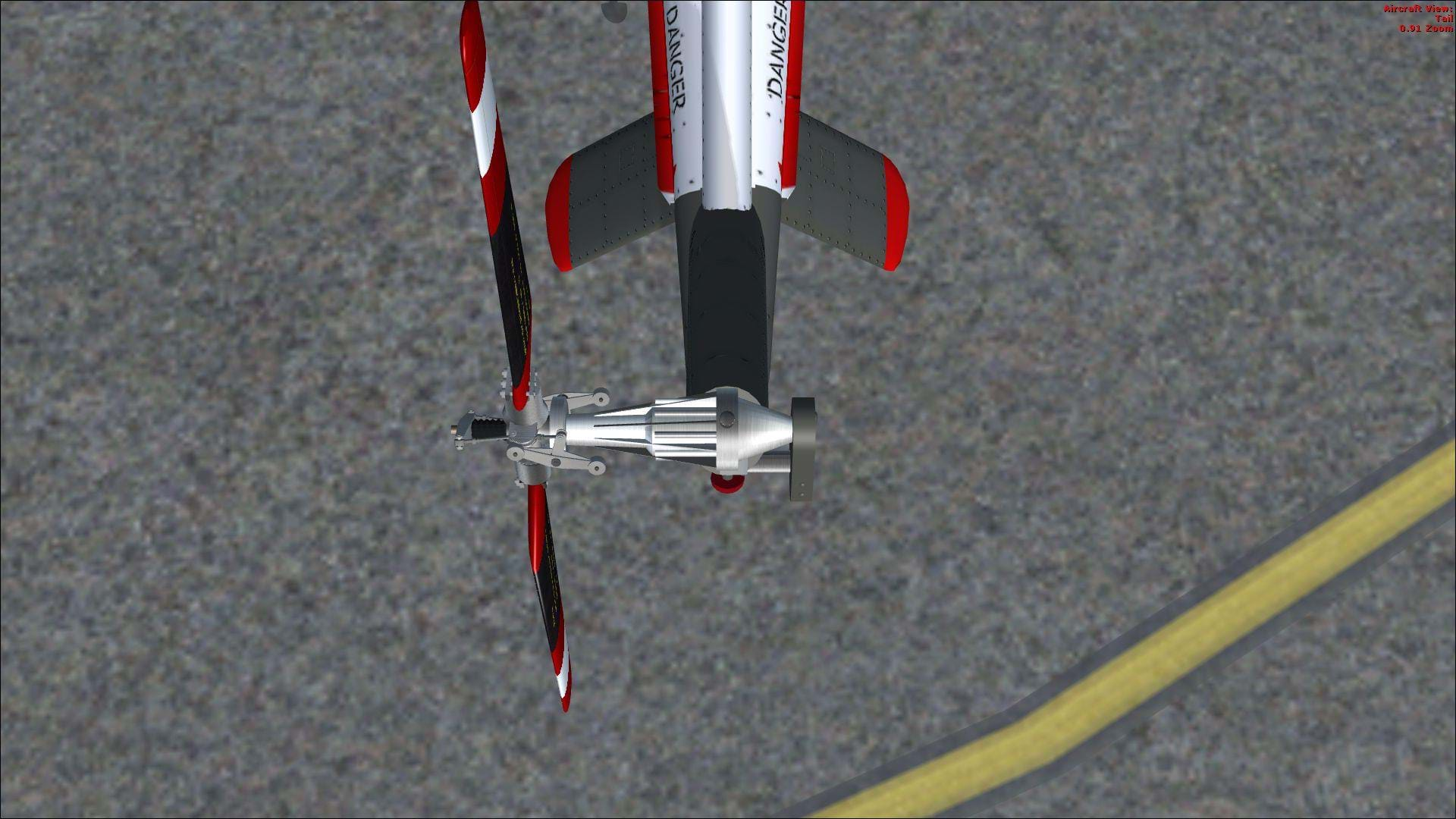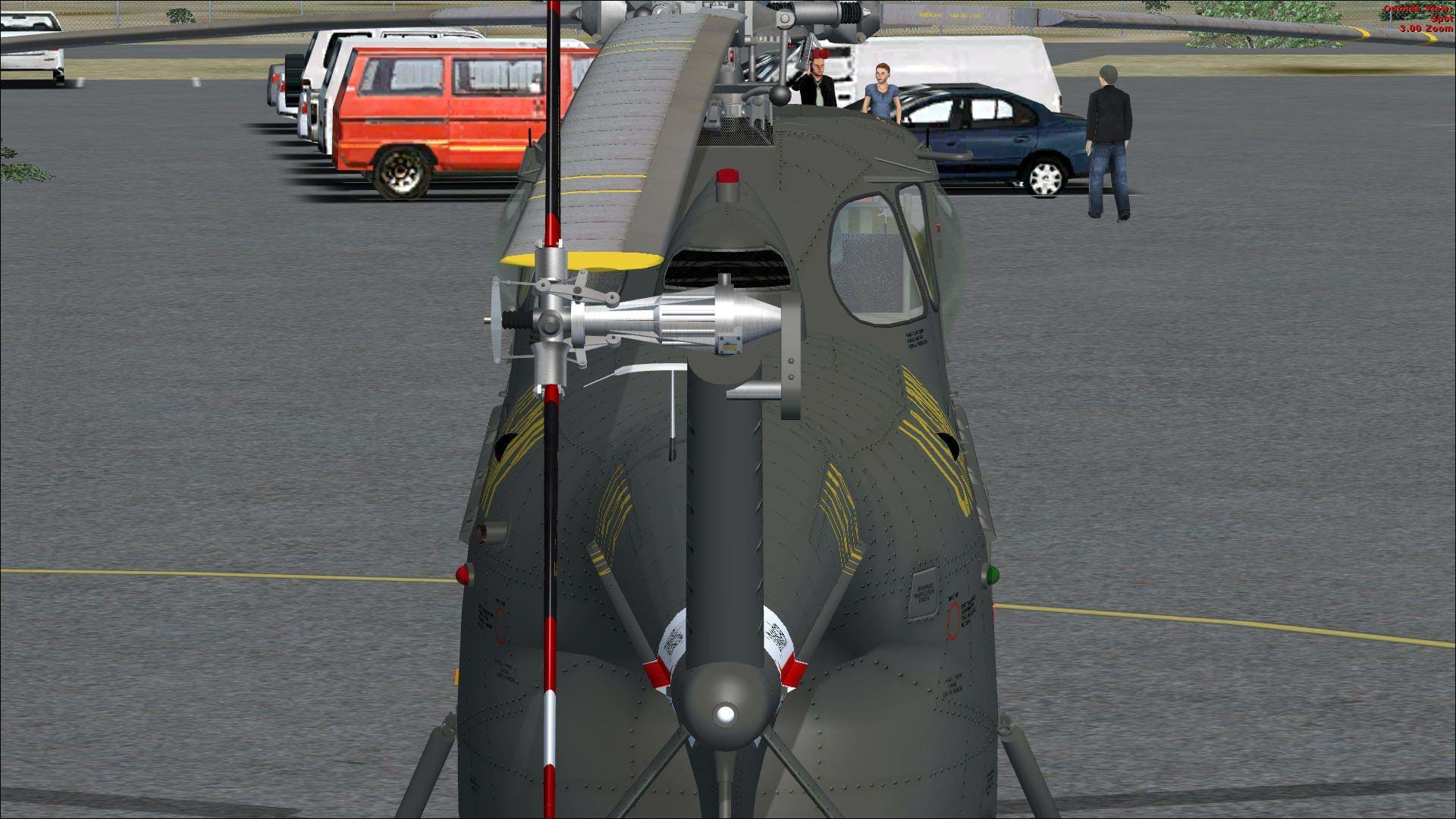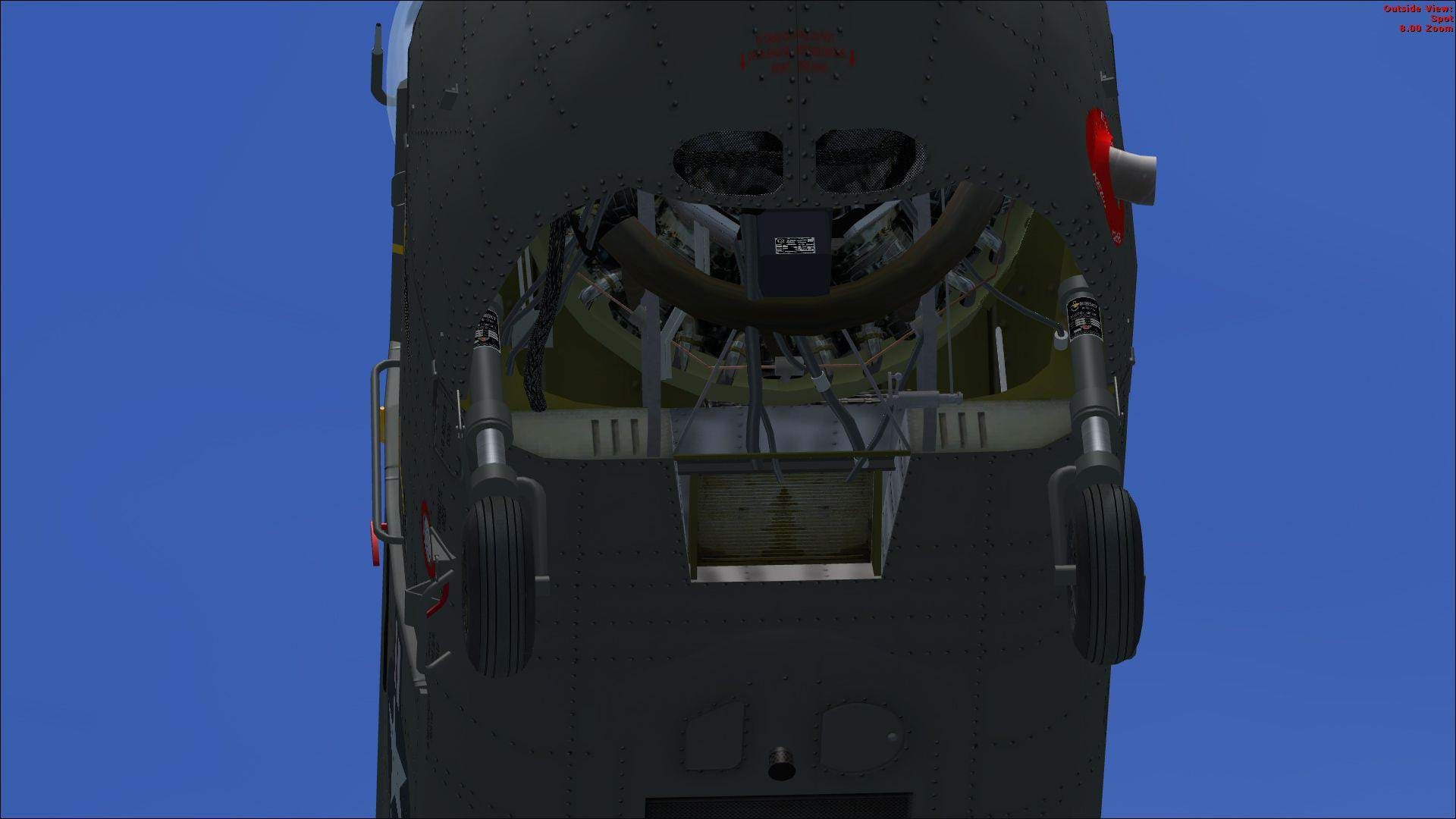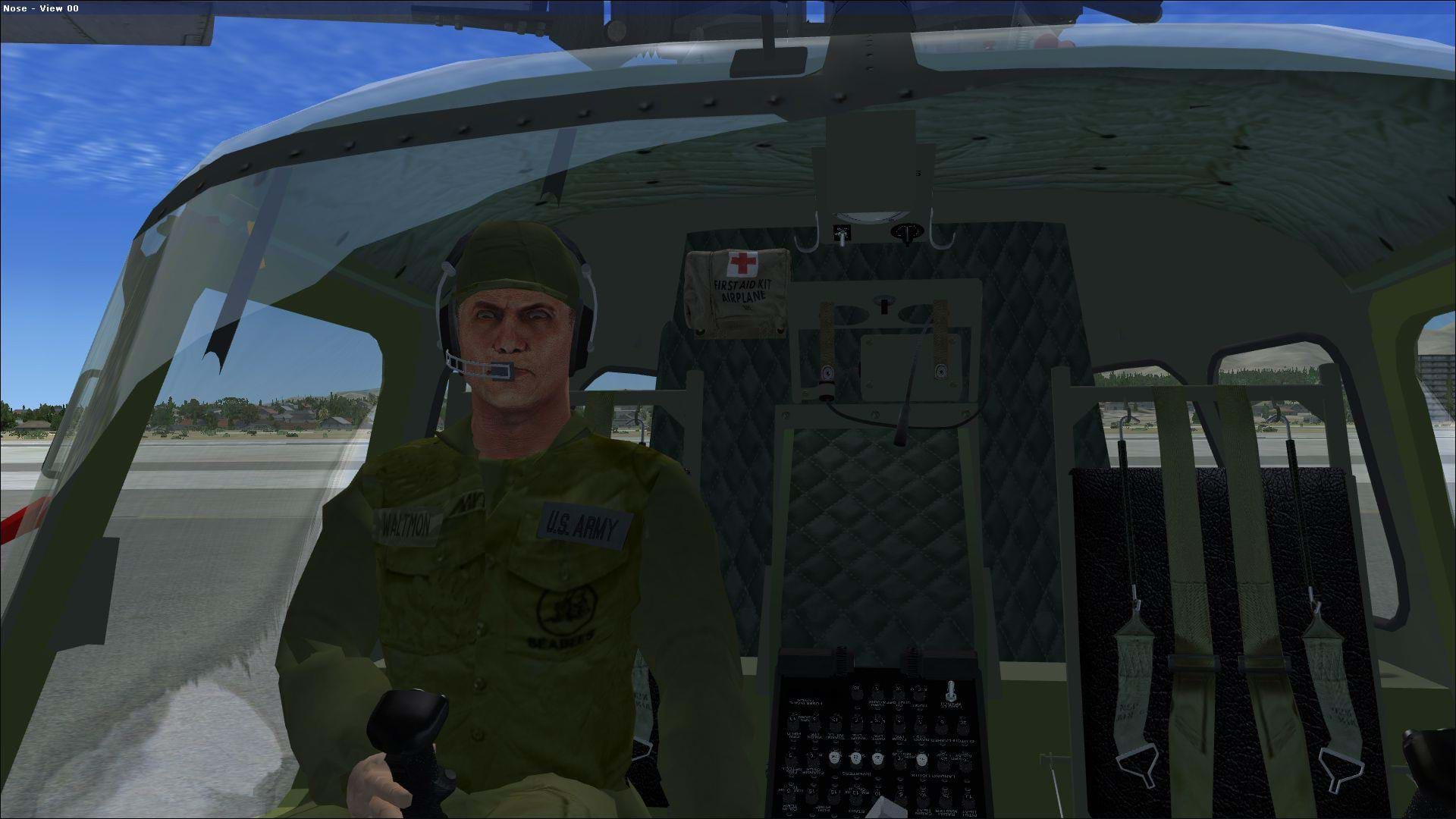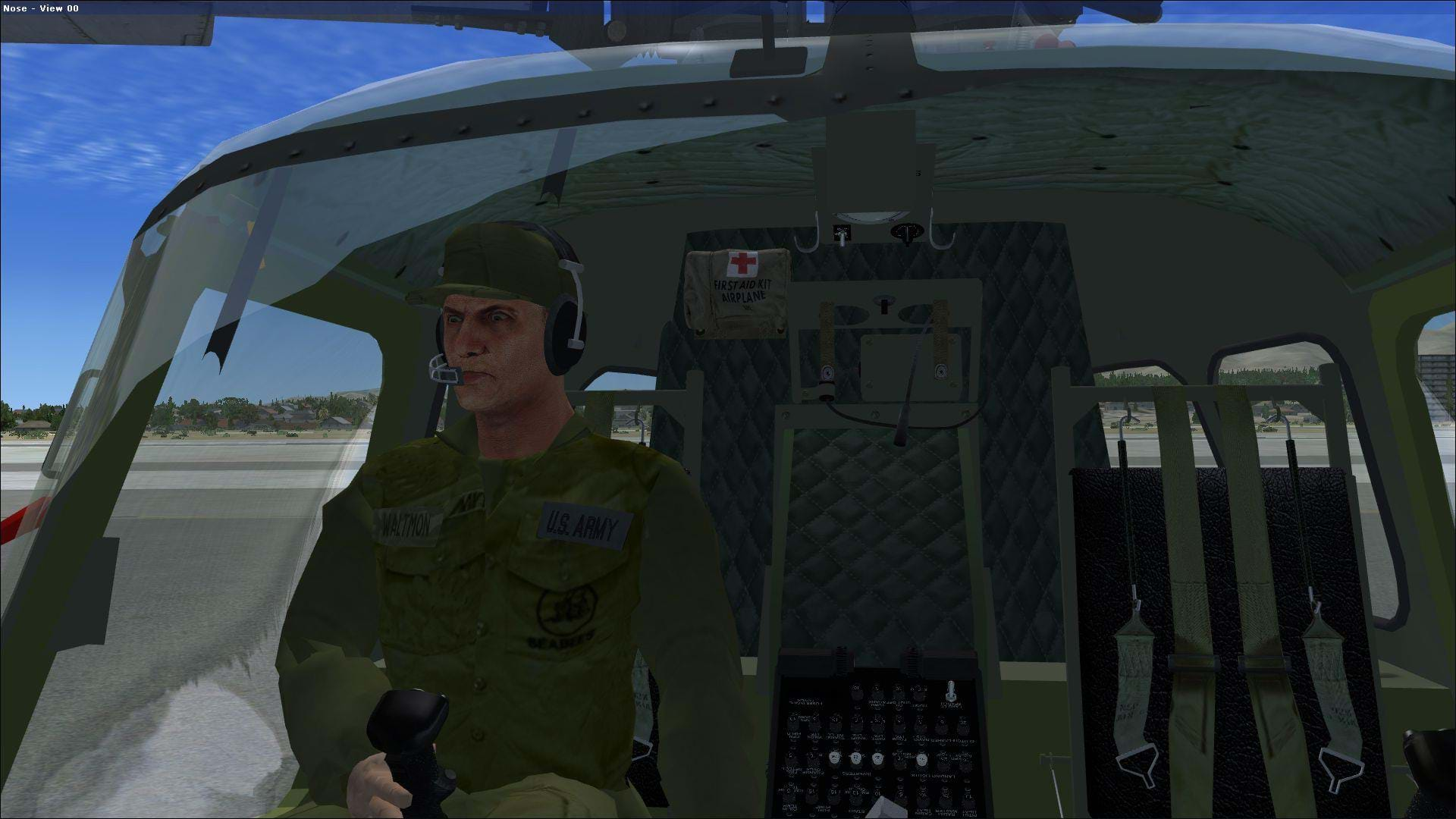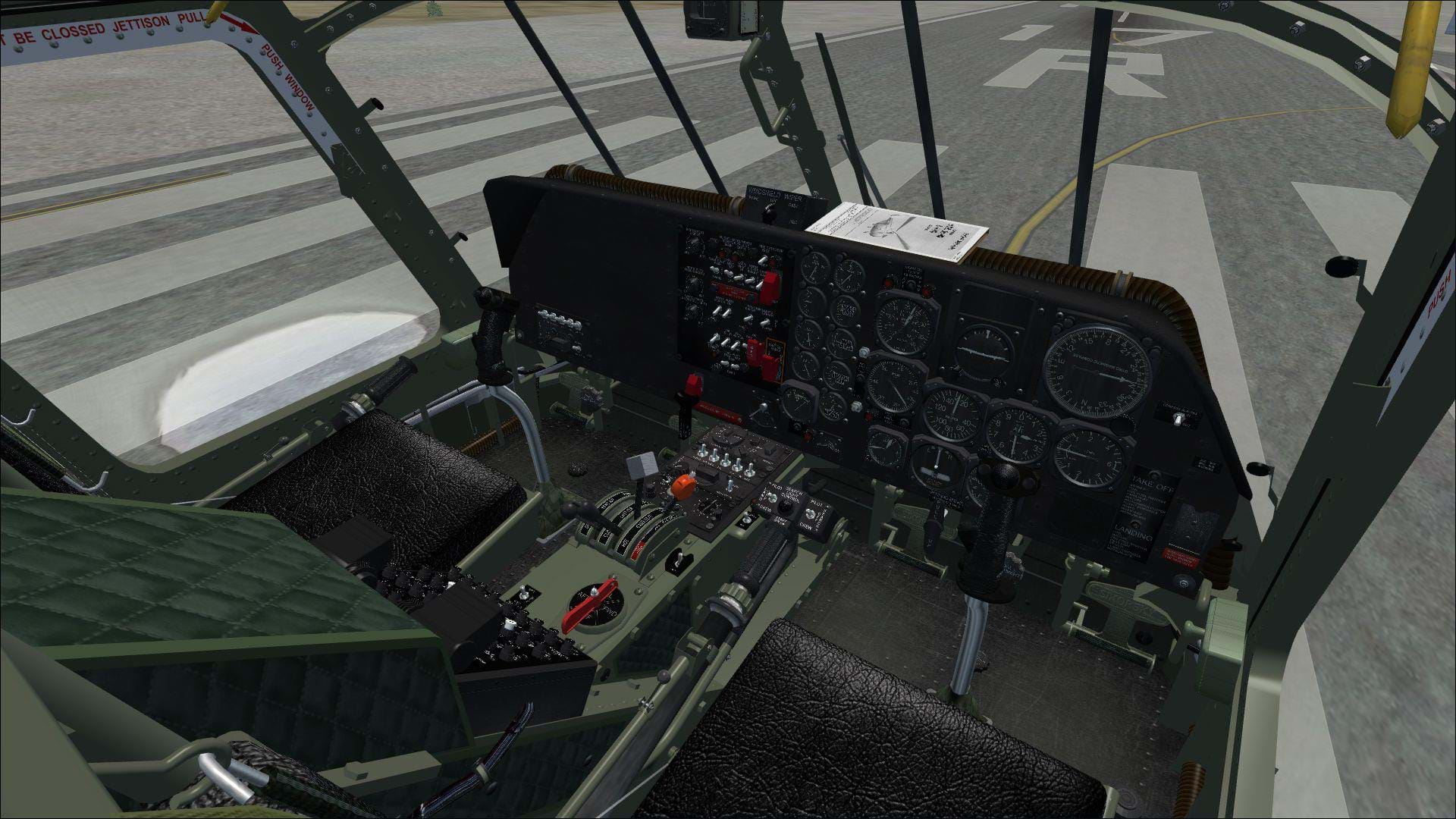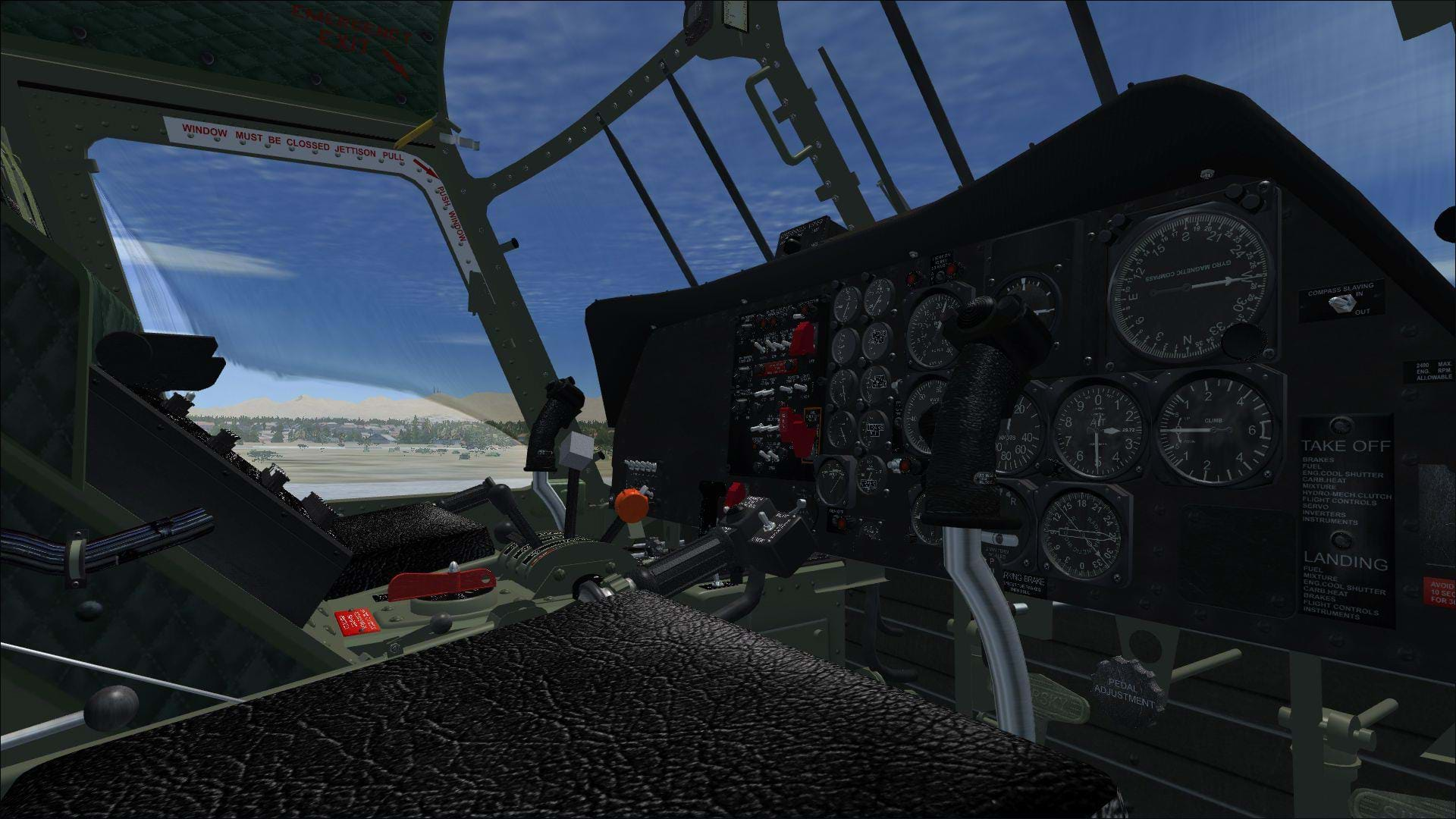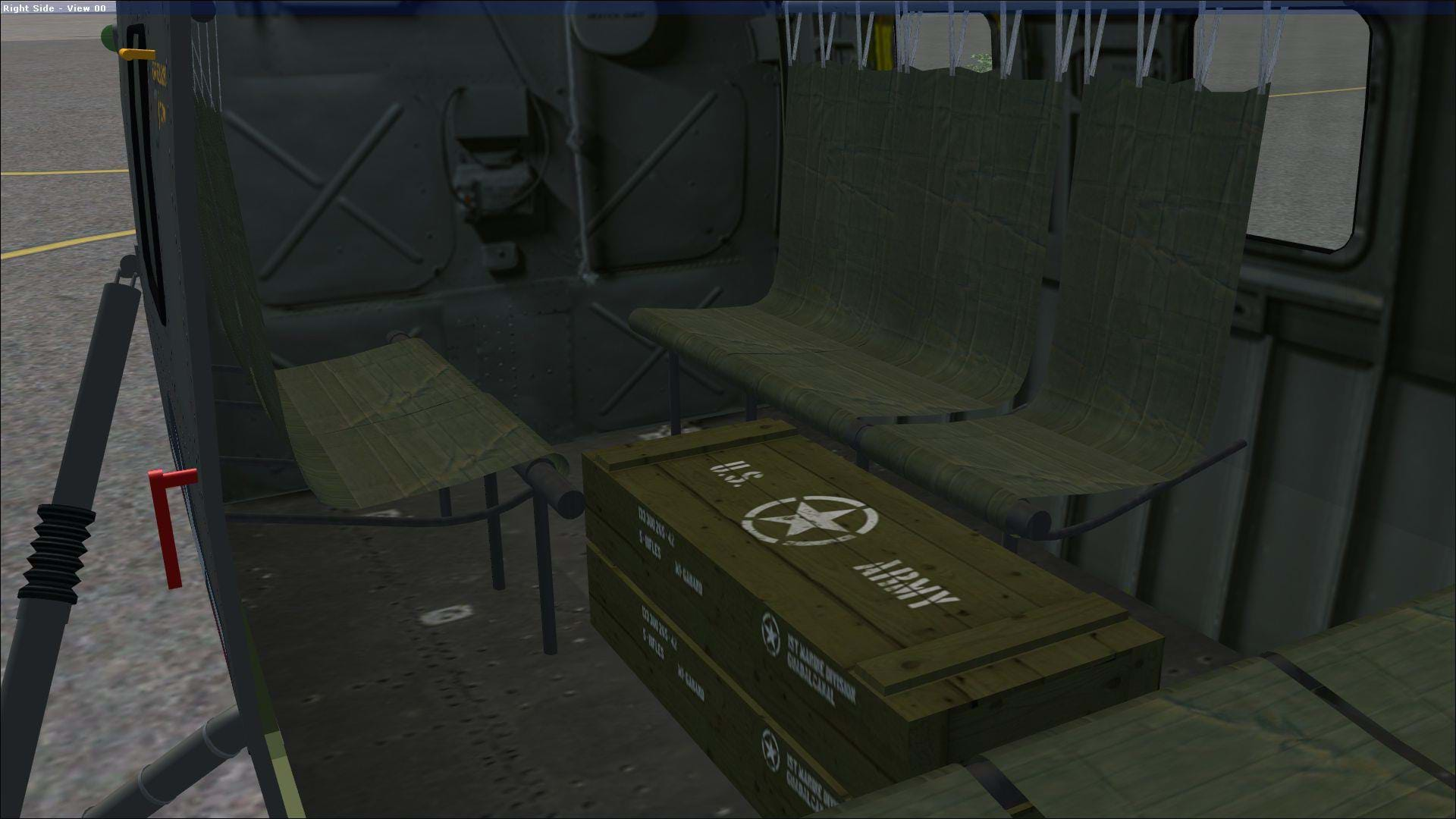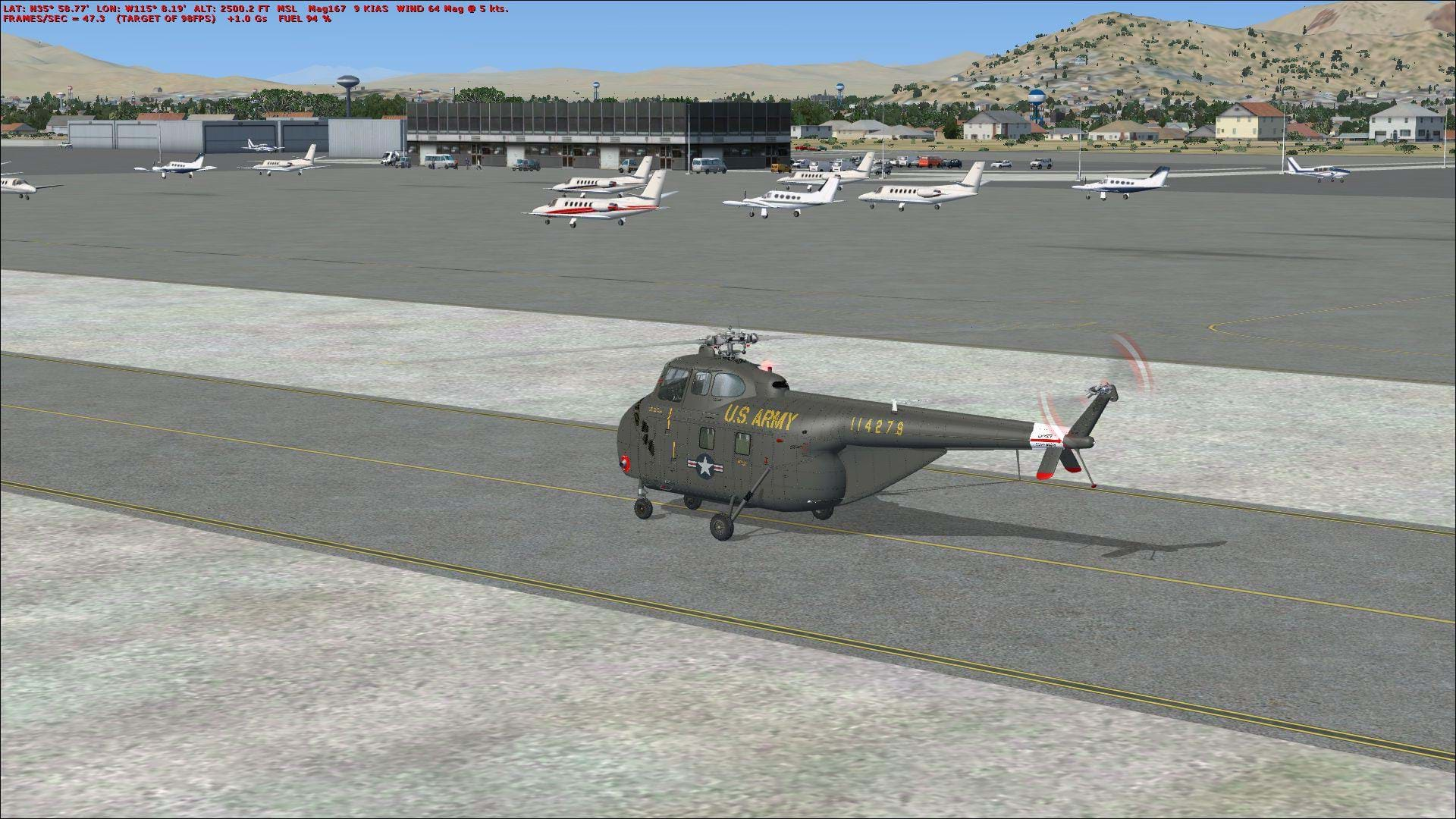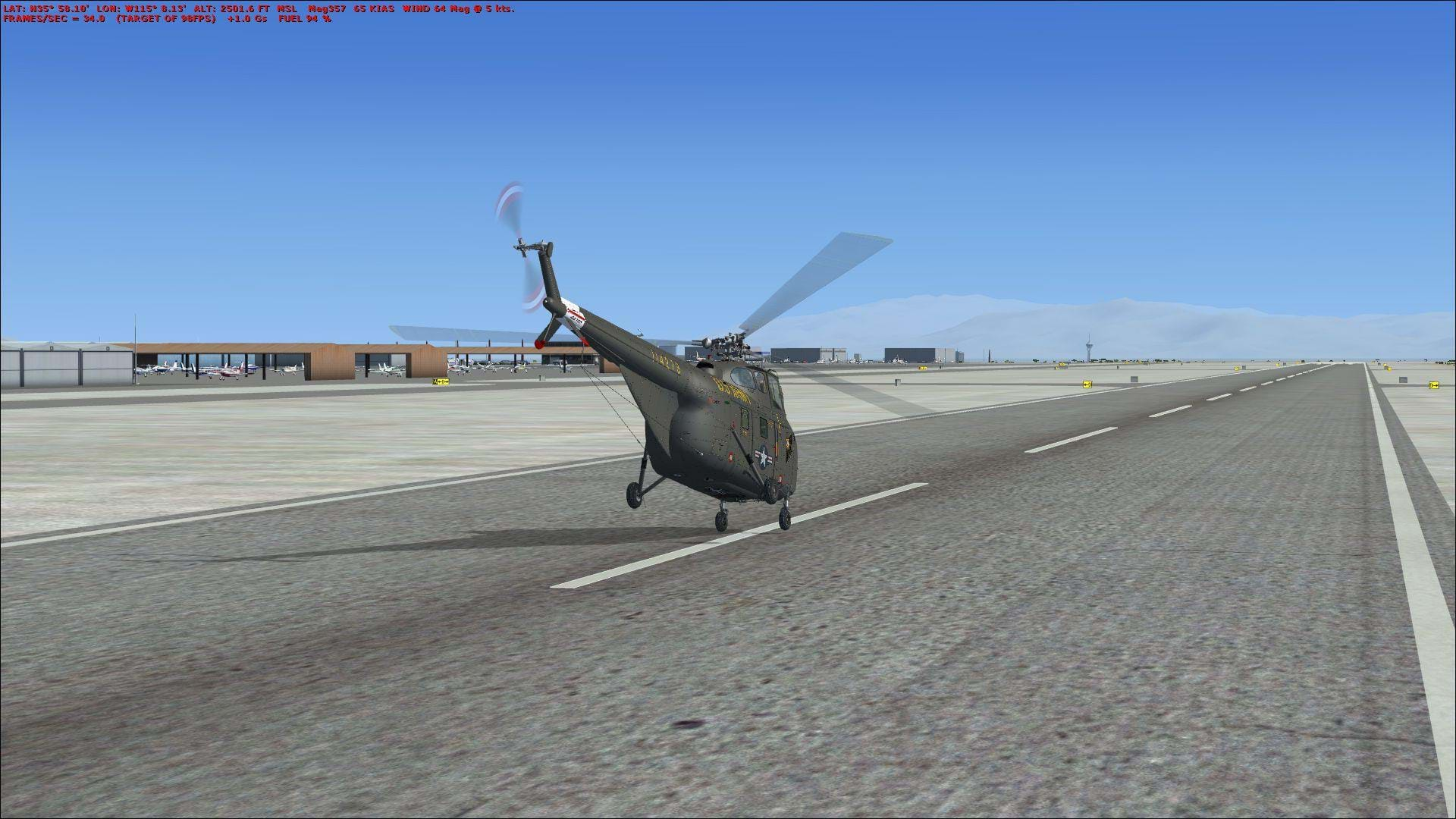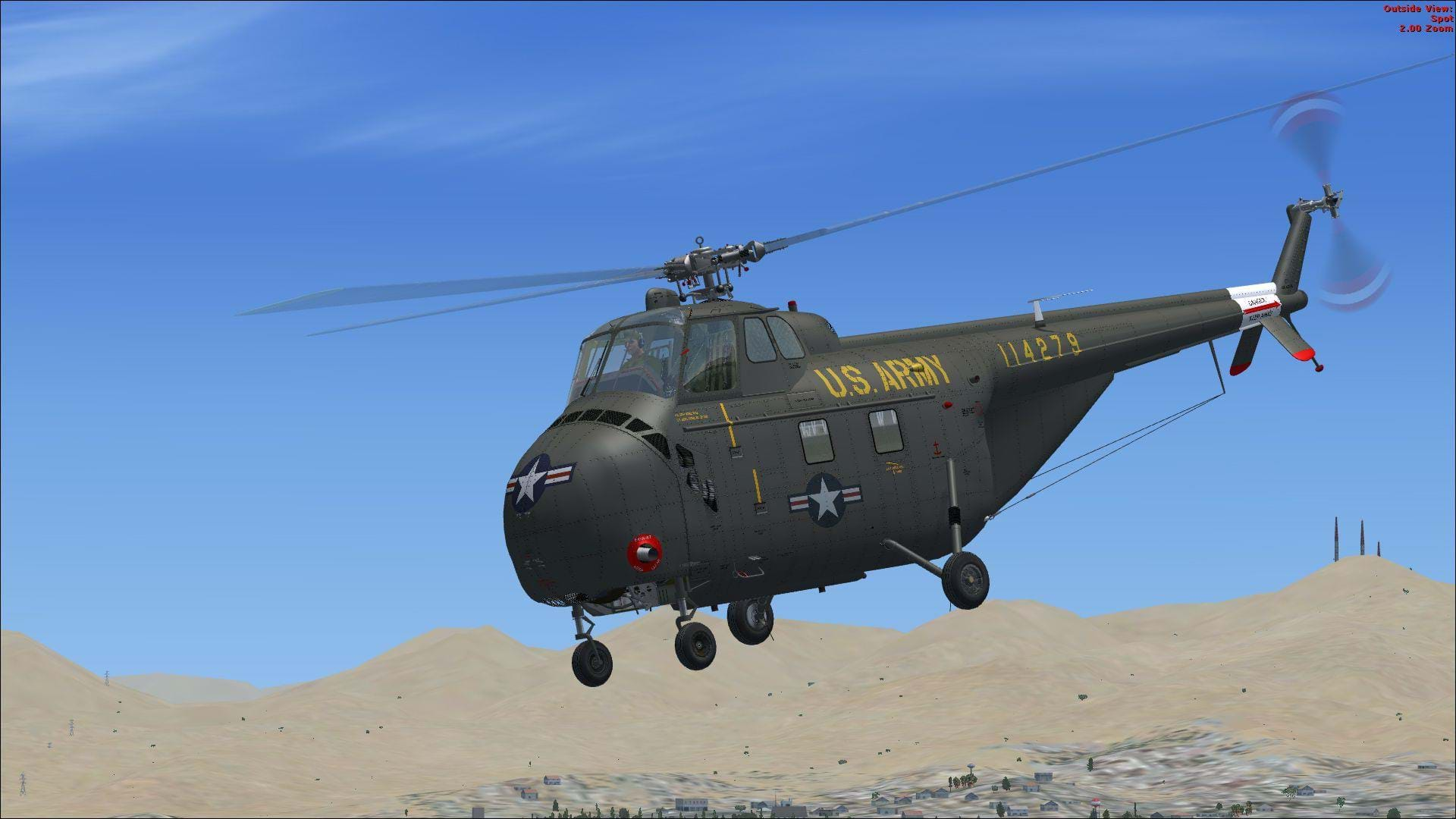Introduction
The Sikorsky H-19 and S-55 isn’t the most beautiful helicopter on the planet, but it’s one of the most resilient. First flown in the late 1940’s, this pioneering airframe was on the leading edge in defining the role of the helicopter in modern society and is still in use today by a number of operators in niche markets, often with modifications that make better suited for its new role. In this review, we are looking at the MP Design Studio H-19 for FSX and P3D.
First Look
From the very first glance, it would seem that MP Design Studio has learned from their experience building their SA342. Their H-19 looks a bit more refined in all aspects of the visual modeling, which is a good thing. Even though the H-19 is an older helicopter than the SA342, it is a more mechanically complex machine, especially in the main rotor and power train.
The MP Design Studio S-55 comes with two versions, the older straight tail boom configuration, and the later slanted tail boom. The slanted tail boom models also feature the revised horizontal stabilizing surface as opposed to the inverted “V” configuration of the strait tail boom model. The Slanted tail boom models also have the additional venting for the larger R-1300 engine installed on these variants.
Unfortunately, the textures still dated like the SA342 and is not up to the same quality as Cera or Milviz. Even though they look like an improvement over MP designs previous models. It still carries the look of late FS9 or early FSX type textures.
As I said before, the H-19 is a bit more complex mechanically than the relatively more modern SA342, especially the rotor system. MP Designs did a reasonably good job modeling the main and tail rotors. Like the SA342, the MP Designs model relies mostly on basic geometric shapes. Most of the components of the Main Rotor head are there, but there isn’t much in the form of textures. That is not necessarily a deal breaker, because to me, it looks better than the earlier MP Design Studio rotor heads. On the plus side, the main rotor blades have nice details, and are a good representation of the early Sikorsky models.
The MP Design Studio S-55 also has a lot going on under the hood! Or clam shell I should say. It looks like there is a pretty well modeled engine in there, but I couldn’t find a way to open the clam shell doors to view it. But when looking from the outside view it can be seen from underneath.
Another high point of the external visual model is the pilot figure. He sort of looks like a young angry Martin sheen. He’s reasonably life like and has really good animation, he even blinks! Although I’m not sure how he could be in the U.S. Army, and also be a Navy SeeBee.
The interior model also looks like it has benefited from the lessons learned by the SA342. It looks a little bit closer to what one would expect from a modern release for FSX/P3D. The textures and modeling are pretty well done. The animation of the knobs and switches are also good with the exception of the throttle on the collective. It’s not a huge problem but the animation is backwards, so when you roll the throttle on, the twist grip visually moves as if you were rolling it off.
The interior modeling of the cabin is also well done. MP designs threw in some extra details to make it fun.
Sounds
The sounds of this model are one of the highlights. It’s got some of the best sounds for a piston powered helicopter that I’ve heard in FSX. The stand out feature of the sounds for this model is in the cockpit. When you open the sliding door of the crew station, you can hear an increase in sound from the outside.
Systems
When reading the manual, I saw this image:
This image is not worrisome on its own; in fact, many developers include disclaimers such as this in their models, mostly because of the limitations of FSX. However, this one is featured a bit more prominently than others I have seen. I did not think too much of it until I got really deep into testing this model.
For the most part, the majority of the systems work pretty well. When flipping on the battery, you can hear the electrical system come to life, and if you leave the battery on for too long it will die as one would expect. There are lots of clickable switches and knobs to interact with, however I did find that the ADF was not compatible with my Saitek Radio panel. I was only able to tune it with the mouse. Also, I’m not sure why, but I found the ADF somewhat unreliable. For some reason, the needle didn’t always track to the station until I had tuned, then off tuned and then re tuned the correct frequency several times. I’m not sure what would cause this, but I’m also not willing to rule out operator error. The ADF and VHF Radios are of a very OLD style, one that most people including myself would not be used to.
One of the positive things about this model is the engine can be started without the main rotor turning, which is the way it should be in real life. But, I also found that when doing cold and dark starts the throttle had no effect on engine RPM. This is troubling because going by the Checklist provided by MP Design Studio, the engine RPM is to be set at 1500 to 1700 RPM but after starting the engine RPM needle shot up and pegged at 4000 RPM. No matter what I did with the throttle, it stayed at 4000 RPM. Further complicating things was that when I engaged the clutch as directed by the included checklist, the engine simply dies. So in short, I was not able to complete a cold and dark start up with this model.
I found many anomalies with the systems of the S-55. This includes the manual throttle feature. The manual throttle features of this model dosen’t behave anything like any helicopter that I am aware of. Instead of maintaining rotor RPM and managing manifold pressure with the throttle, moving the throttle axis simply moves the collective. This is not how manual throttle works. In other cases, while in manual throttle, the collective jumps up and down on its own with corresponding spikes in manifold pressure. I’m not sure why this happened, but either way, it’s not very realistic behavior.
Another issue with the manual throttle is that the throttle axis only has about 50% authority. So, when you roll or rotate the throttle axis on your flight controls to the full open position, the throttle in the simulator stops at 49%-50%. This does not really seem to affect the flight characteristics, but it’s certainly odd. It may have something to do with the way the coding is done, but I’m not sure.
Going back to the disclaimer in the manual, I’m not sure the quirks and anomalies I found can be fairly described as modifications of the S-55’s systems to fit into the restrictions of FSX. I understand that FSX is not the most permissive platform for helicopter system modeling, especially a piston-powered helicopter, but this made me wonder if this model was fully tested in FSX.
Flight Dynamics
In my usual interest of full disclosure, I’ve never flown a S-55 or H-19 in real life, So the majority of my observations are based on general helicopter behavior. As a word of caution, ensure that your pedals are centered prior to loading the S-55/H-19 in FSX. Any pedal displacement will cause the aircraft to rotate, or spin in the direction of the displaced pedal. It has been my experience with real world helicopters with wheeled undercarriage that the weight of the aircraft keeps the nose straight at flat pitch. Small displacement of the pedals generally does not have the effect I see in the S-55/H-19. It typically takes some sort of collective application before an aircraft will turn like this. This isn’t a huge deal, but something I thought worth mentioning.
The first test I did after the S-55/H-19 stopped spinning was ground taxi. Like any helicopter, the real S-55/H-19 is top heavy, so I expected to need some cyclic input to keep the model level as I made my turns, which you do get with this model. However, power management for ground taxiing is a bit difficult. The amount of power required to smoothly ground taxi is also enough power to bring the back wheels off the ground, which is not very realistic to me. It is likely that the cyclic input needed to maintain a level attitude is caused by the excessive amount of collective, not necessarily the center of gravity.
On the other hand, the wide set 4-wheel configuration offers excellent stability that makes rolling takeoffs a breeze.
The MP Designs S-55/H-19 is probably right at home in FSX as far as flight dynamics are concerned. I say probably because I’ve never flown a real H-19 or S-55. It’s not super stable, or extremely agile, but it is pretty nimble for a helicopter this size and weight, which is how the H-19 has been described to me by people who have flown it. Takeoff to an IGE hover in this model are smooth, and require some left pedal input. I’ve never flown the S-55 so I can’t say if the pedal input required is realistic of not, but torque effect is modeled here.
One negative thing I found about the flight dynamics was the autorotation performance. Even though I’ve never flown a real H-19 or S-55, it was pretty clear to me that there was something terrible wrong with the autorotation characteristics of this model. When doing autorotations with the throttle at Idle, or with the fuel mixture in the cutoff position, this model almost literally falls like a rock. I’ve seen some real-life helicopters with some pretty poor autorotation characteristics, but nothing like this. Regardless of the entry airspeed, this model decelerates to almost zero ground speed and takes on a near vertical to completely vertical angle of descent depending on your altitude. During this vertical decent, the airspeed indicates close to what it showed when the auto was initiated and the rotor and engine RPM slow to the 1500 RPM mark without any sort of needle split. The cyclic authority during the decent phase of the autorotation is also very limited. The autorotation performance of this model is surprisingly poor.
This model is advertised as being able to duplicate vortex ring state, which I’m not really sure it does. My first tests were done at about 1500 feet AGL. At zero airspeed, lowering the collective to the full down position causes the aircraft to descend very rapidly. At about 500 feet I attempted to arrest the decent with collective, and the model continued its decent and struck the ground. This was very promising. I tried it again, but this time from above 2500 feet. This time when I attempted to arrest the decent, the aircraft came to a stop. I did this over and over and over and every time I applied collective to exacerbate the VRS condition, I watched the vertical speed indicator needle rotate back to the zero mark. It would appear that this model missed out on the lessons learned from the MP Design studio SA342.
If you remember my review of the MP Design studio SA342, you’ll remember that I was somewhat critical of the flight performance of the model compared to what was advertised. I’m sorry to say that the S-55/H-19 also fails to live up to the advertised flight modeling. In addition to the poor autorotation characteristics, and lack of VRS modeling, I didn’t see anything resembling translating tendency, or LTE in this model.


